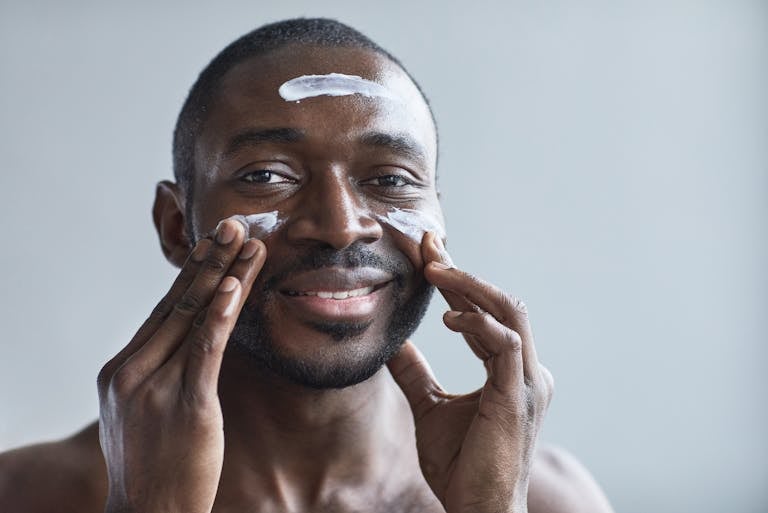Unlock Perfect Skin pH Balance: Your 2024 Guide to a Radiant Glow
Ever wondered why your skin sometimes rebels against that new cleanser or moisturizer? It might all boil down to the skin pH balance! This concept is not just for science geeks; it’s crucial for anyone aiming for glowing, healthy skin. When your skin’s pH strays too far from its natural level, you could face pesky problems like acne or dryness. So, what’s the magic number? The skin’s natural pH sits slightly acidic, around 4.7 to 5.5. This helps keep your skin’s barrier strong and bacteria-free. In this post, we’re going to explore why maintaining this balance matters and how it can transform your skincare game.
Watch this YouTube video for more insights into skin pH and its importance in skincare. Discover how the right products can help maintain this delicate equilibrium, ensuring skin that looks and feels its absolute best.
What is Skin pH Balance?
Ever heard of pH balance when it comes to your skin? It’s quite essential if you want that glowing, healthy look! Imagine your skin as a smooth highway. The pH balance is like the road sign that keeps everyone driving smoothly. Without it, things can get a bit chaotic. So, what exactly is skin pH balance, and why does it matter so much in skincare?
Understanding the pH Scale
The pH scale is a numerical scale used to specify the acidity or alkalinity of a substance. It ranges from 0 to 14, with 7 being neutral. Numbers below 7 indicate acidity, while numbers above 7 indicate alkalinity.
- Acidic (0-6): Think vinegar or lemon juice.
- Neutral (7): Pure water fits here.
- Alkaline (8-14): Baking soda is a good example.
When it comes to our skin, the ideal pH is slightly acidic, usually around 4.7 to 5.5. Learn more about this from Everyday Health.
The Normal Range for Skin
So, what’s the big deal about this slightly acidic range? Well, your skin is home to a fine-tuned ecosystem known as the acid mantle. This tiny acidic layer serves several functions:
- Protects against Bacteria: Keeps unwanted bacteria at bay like a protective fence.
- Moisture Lock: Helps retain moisture, preventing dryness.
- Barrier Support: Strengthens the skin barrier, so polluting pests can’t sneak in.
Drifting away from this ideal pH can lead to skin problems such as dryness, irritation, or even acne. Check out what the Cleveland Clinic has to say about the importance of maintaining skin’s pH.
Why pH Balances Matters
Now that you know what an optimal pH looks like, let’s talk about why it’s so crucial for your skincare routine. When skin pH is out of whack, other problems can begin to crop up:
- Increased Sensitivity: Higher pH levels can make your skin sensitive to irritants.
- Acne Alert: Imbalanced pH might lead to more breakouts, as the protective acid mantle can’t keep inflammation at bay.
- Barrier Breakdown: Without the right pH, your skin’s natural barrier weakens, making it susceptible to environmental damage.
Using skincare products with a pH that matches or complements this balance goes a long way in keeping your skin happy and healthy. Read more about it from Eucerin.
Understanding your skin’s pH balance is like having the secret recipe for maintaining its health and glow. Keep your skin’s highway smooth and clear with the right knowledge, and watch the magic unfold!

Why Skin pH Balance is Important
Maintaining the right pH balance is like keeping a tightrope walker steady on the rope—any misstep can lead to a fall! Your skin’s pH is crucial for ensuring that your skin remains healthy, vibrant, and glowing. It’s all about balance, baby! But why does this balance matter so much? Let’s break it down and explore two key reasons: the effects of imbalanced pH and the role in skin barrier function.
Effects of Imbalanced pH
Ever wonder why your skin sometimes acts like a rebellious teenager? It could be due to an imbalanced pH. When your skin’s pH is out of whack, it can lead to a host of problems such as:
- Acne Breakouts: An alkaline skin environment (above the normal pH of about 5.5) can result in zits and blemishes popping up like unwanted guests. 🧼
- Irritation and Sensitivity: If your skin becomes too acidic or too alkaline, it might start feeling like sandpaper. This can lead to redness, irritation, and that itchy feeling you can’t ignore.
- Skin Conditions: Conditions like eczema and dermatitis may worsen if your skin’s pH is not balanced.
Finding that sweet spot can help keep these issues at bay. To learn more about how an imbalanced pH affects your skin, you could check out Everyday Health’s article on skin pH.
Role in Skin Barrier Function
Picture your skin as a fortress. The walls are your skin barrier, and the pH is the gatekeeper. The skin’s acid mantle, a thin film on the surface, is vital for keeping harmful bacteria out and essential moisture in. When your skin’s pH is balanced:
- Protection Against Bacteria: It fights off the nasty invaders that want to cause infections. Think of it like your skin’s personal bodyguard.
- Locks in Moisture: Proper pH levels ensure that your skin stays hydrated and supple.
- Maintains Elasticity: A balanced pH helps keep your skin bouncy and young-looking.
If you’re curious to dive deeper into how your skin’s pH plays a role in its barrier function, Cleveland Clinic offers a fantastic explanation.
Finding the right pH balance is like crafting a perfect recipe; it takes some trial and error, but when you get it right, the results are truly rewarding. So next time your skin seems to be acting up, remember to check the pH balance—it might just be the key to unlocking your happiest, healthiest skin. 🧪✨
 Photo by Sora Shimazaki
Photo by Sora Shimazaki
How to Determine Your Skin’s pH Balance
Your skin’s pH balance is like the Goldilocks principle—too high or too low, and your skin can become as temperamental as a rainy Monday. But when it’s just right, your skin is happy, glowing, and, most importantly, healthy. Let’s explore two ways you can figure out what’s going on with your skin’s pH balance.
Using pH Test Strips
One of the simplest ways to check your skin’s pH balance is by using pH test strips. These handy little tools are like the litmus test for your skin, turning you into a mini scientist in your own bathroom. 🧪
Here’s how you can do it:
- Choose the Right Strips: Make sure you get strips specifically designed for skin pH testing. These are widely available online and in stores.
- Cleanse First: Wash your face with a gentle cleanser. This removes any oils or makeup that might throw off the reading.
- Test Time: Gently pat your skin to dry, then press the strip on the area you want to test (usually the forehead or cheek).
- Read the Results: After a few seconds, compare the color change on the strip to the included chart. A result of around 5.5 is what you’re aiming for—this means your skin is at a healthy, slightly acidic balance.
This method is not only affordable but gives you quick results, helping you adjust your skincare routine if necessary. If the pH is off, products like those found in this article might help restore it.
Professional Skin Analysis
If you want a more precise measure of your skin’s pH balance, a professional skin analysis could be the way to go. These analyze more than just pH and can reveal all sorts of insights about your skin’s health.
Here’s what you can consider:
- Dermatologist Visits: A dermatologist can offer extensive tests, checking everything from hydration levels to elasticity and, of course, pH balance. They’ll use advanced tools and devices that provide a complete skin profile.
- Skin Care Clinics: Many beauty clinics offer services like the VISIA skin analysis, which is detailed in this link, and these provide in-depth imaging of your skin to assess various aspects, including pH.
Professional analysis can be a lifesaver if you’re battling stubborn skin issues or want to customize your skincare routine based on fail-proof data. Plus, having a professional look at your skin gives you peace of mind, knowing that you’re informed and ready to tackle any issues head-on.
By understanding your skin’s pH balance, you hold the key to unlocking the door to better skincare and healthier skin. Whether you decide on the DIY route or the expert analysis, you can’t go wrong with being informed and proactive—because your skin deserves nothing less! 🌟
Adjusting and Maintaining Skin pH Balance
Have you ever wondered why some days your skin looks flawless while other times it seems out of sync? The answer might lie in the pH balance of your skin. Maintaining the right pH level can be a game-changer when it comes to skin health and appearance. Let’s explore how we can keep our skin pH balanced through skincare products and lifestyle choices!

Photo by Andrea Piacquadio
Choosing pH-Balanced Skincare Products
Are you picking the right skincare products? Choosing products with the right pH is crucial, as they can protect your skin from bacteria and other nuisances. Here’s what to look for in pH-balanced skincare products:
- Gentle Formulation: These products softly cleanse and hydrate without stripping the skin of its natural oils.
- Ingredients that Support the Acid Mantle: Look for components like hyaluronic acid and lactic acid which maintain skin’s natural pH level.
- Avoidance of Harsh Chemicals: Steer clear of sulfates and alcohol that can disturb the pH balance.
Why are these pH-balanced products essential? They help maintain the skin’s acid mantle, a shield that guards against harmful bacteria and environmental pollutants. Keeping this barrier intact means reducing the risk of issues like acne and dryness. For more insights, check out this guide on pH and skincare.
Lifestyle Factors Impacting Skin pH
Did you know your daily habits can sway your skin’s pH? Yes, even what you eat and drink! Here’s what you should consider:
- Diet: Consuming high amounts of sugar and processed foods can spike inflammation, affecting the skin’s pH. Opt for a balanced diet rich in fruits and vegetables.
- Hydration: Water is your skin’s best friend. Staying hydrated helps to maintain an ideal pH level, giving your skin a natural glow.
- Environmental Factors: Pollution and extreme weather conditions can strip the skin of its natural balance. A good practice is to use moisturizers with antioxidants to combat these effects.
How can you adapt to these factors? It’s all about balance! Being mindful of your lifestyle choices can keep your skin in check. Learn more about how different factors affect skin pH and what you can do to maintain it.
Maintaining the perfect skin pH doesn’t have to be a mystery. By selecting the right products and making mindful lifestyle choices, you can enjoy healthy and radiant skin every day! 🌟

Common Myths About Skin pH Balance
When it comes to skincare, there are many assumptions floating around the internet. One of the most misunderstood areas is the concept of skin pH balance. Let’s unpack some of these myths to help you understand what your skin really needs. 😊
Myths vs. Facts
Myths about skin pH balance can spread faster than a trending TikTok dance. But don’t worry, we’re here to clear the air! Let’s break down the difference between what’s often heard and what’s actually true.
- Myth: Alkaline products are great for your skin because they are gentle.
- Fact: While it might seem like alkalinity equals gentleness, it’s a delicate dance. Our skin thrives in a slightly acidic environment, typically with a pH around 4.7 to 5.5. Alkaline products can disrupt this balance, leaving skin vulnerable to dryness and irritation. For more details, check out Paula’s Choice on the importance of acidic skin pH.
- Myth: All skin types have the same pH.
- Fact: Just like people, skin types vary widely. For example, oily skin may skew slightly more acidic, while dry skin might lean towards the alkaline side. It’s crucial to identify your skin type to maintain its optimal pH.
- Myth: pH balance is only important for people with sensitive skin.
- Fact: The truth is, everyone benefits from a well-balanced skin pH. An unbalanced pH can lead to a variety of skin issues, including breakouts and premature aging. It’s all about harmony! Everyday Health explains how skin pH affects all skin types.
- Myth: You can always feel when your skin’s pH is out of whack.
- Fact: Unfortunately, this isn’t typically the case. You may not feel any immediate symptoms when your skin’s pH is off balance. However, over time, this imbalance can cause persistent problems like acne or eczema.
By understanding these myths, you can make better decisions for your skin’s health. Remember, the goal is not just to pile on products, but to maintain a balanced ecosystem on your face. 🌿
Conclusion: The Importance of Maintaining Your Skin pH Balance
Maintaining your skin’s pH balance might just be the unsung hero in your skincare routine. Why? Because skin with a balanced pH is like a well-oiled machine, keeping everything running smoothly and efficiently. Let’s break down why keeping this equilibrium matters so much for your skin health and why it’s worth your attention.
The Role of Skin pH in Health
Your skin’s pH level plays a key role in maintaining its barrier function, which is the first line of defense against harmful environmental factors and pathogens. A healthy skin pH is slightly acidic, usually around 5.5, and this acidity prevents the growth of bacteria and fungi. Healthline explains that a maintained balance helps keep this protective barrier intact, which can reduce issues like irritation and acne.
Common Problems of Imbalanced pH
It’s quite common that modern skincare products might upset this delicate scale, often tipping it towards being too alkaline. When your skin’s pH is unbalanced, you might notice dryness, excessive oiliness, or even redness. It’s like when your favorite band plays off-key, it just doesn’t feel right.
Here’s a quick list of signs your skin pH might be off:
- Dryness: Skin that feels tight or flaky.
- Oiliness: Excess oil leading to shiny skin and breakouts.
- Irritation: Red, itchy, or inflamed skin.
For more insights, you can visit Everyday Health.
Strategies for Maintaining Balanced pH
Keeping your skin’s pH in check isn’t rocket science! With a few mindful updates to your routine, you can ensure your skin stays in its happy place:
- Choose pH-Friendly Products: Opt for products that are slightly acidic or pH balanced. Your cleansers, toners, and moisturizers should harmonize with your skin’s natural pH.
- Avoid Over-Cleansing: Washing your face too often can strip the skin of its natural oils. Stick to a gentle cleansing routine.
- Incorporate Probiotics: These can help in maintaining the skin’s microbiome and balance. Cleveland Clinic suggests incorporating these into your diet and skincare.
By focusing on these strategies, you’re more likely to maintain your skin’s barrier, leading to healthier, glowing skin. Treat your skin like a delicate ecosystem — because it is!
Remember, just like maintaining good grades requires consistent effort, keeping your skin’s pH in check demands regular attention. But trust me, a little care goes a long way in achieving that radiant complexion! 🌟







